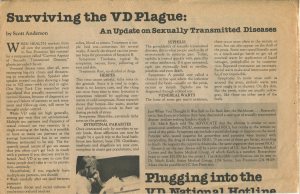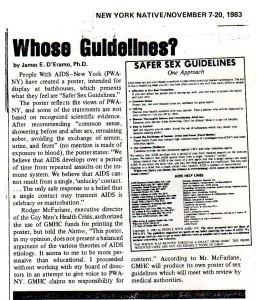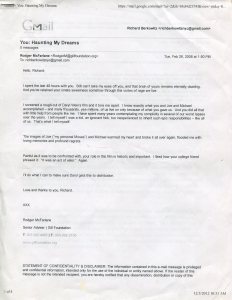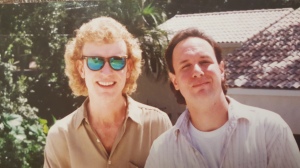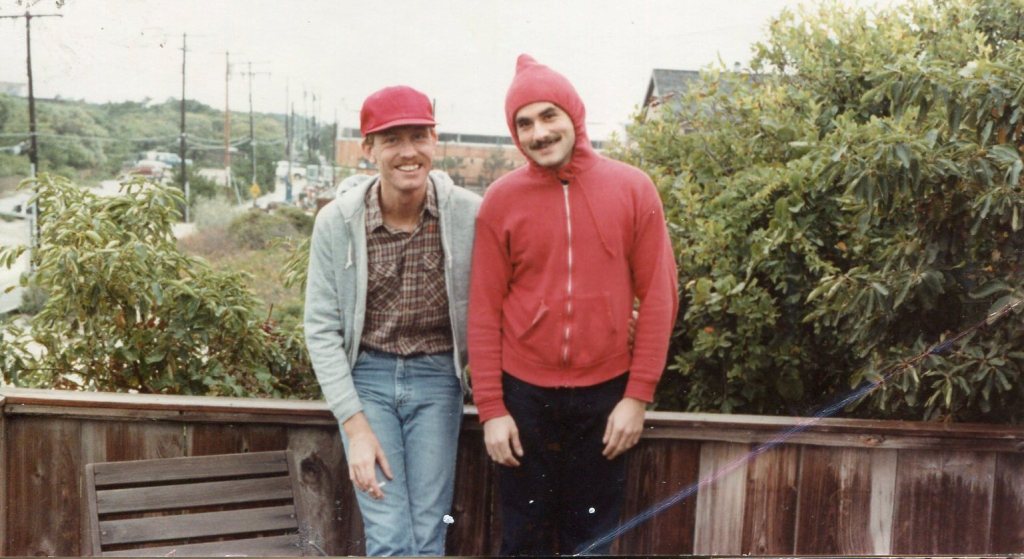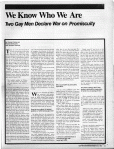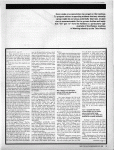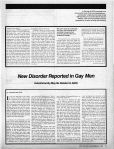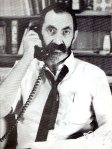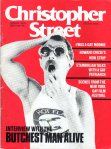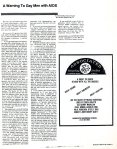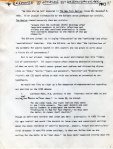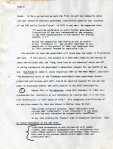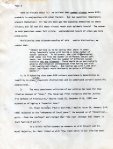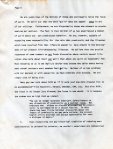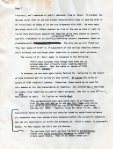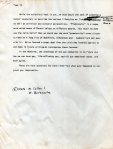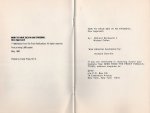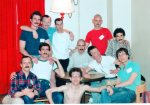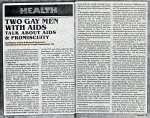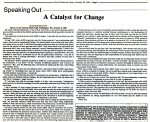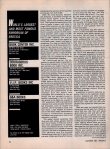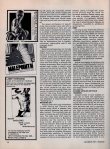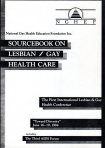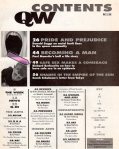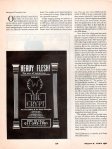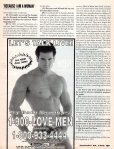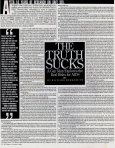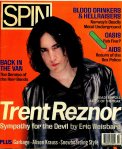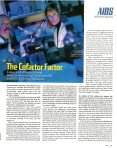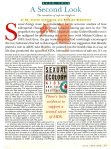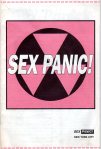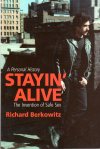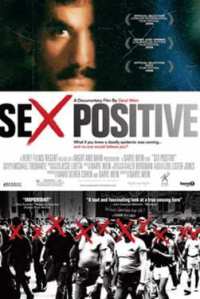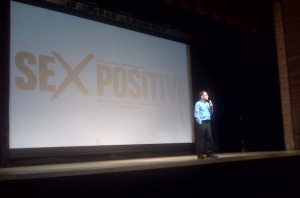In August 1982, blood tests confirmed my worst fear: immune deficiency. Everything I’d read about AIDS convinced me I was doomed. Then my doctor, Joseph Sonnabend, told me that I might survive if I didn’t further tax my immune system by exposing myself to more STIs. In the 1970s, STIs became rampant, but sexually active gay men had the highest rates by far.
Sonnabend made sense. From our first encounter at Gay Men’s Health Project, he warmed to my concerns about STIs, but I hadn’t realized that Sonnabend was an STI expert with a history of distinguished lab research. He said I had something to offer in fighting AIDS and introduced me to a like-minded patient, Michael Callen.
Gay lib politicized Callen and me in a way that made Sonnabend’s ideas resonate. We didn’t trust the medical establishment with its history of pathologizing homosexuality even after the APA’s 1973 change of heart. Under Sonnabend’s scientific guidance, Callen and I wrote articles that offered community-based solutions, a do-it-yourself approach to activism that taught us how to protect ourselves and each other.
In December 1982, in “A Warning to Gay Men with AIDS,” we detailed the dangers of AIDS patients putting blind trust in medical experts. In May 1983, we self-published “How to Have Sex in an Epidemic,” regarded as the invention of safe sex for AIDS. In June 1983, Callen and I were part of a group of 11 gay men who created the “Denver Principles,” a landmark document that refined doctor/patient relationships.
Our writing stressed that lifestyle changes in the 1970s were driving the epidemic in gay men. That angered “gay” leaders who’d championed sexual freedom. Even our invention of safe sex became easy to marginalize: we didn’t have what people look for in experts. But its also true that the community response to AIDS wasn’t just a full embrace of mainstream professionals – but the de-legitimizing of anyone who questioned them.
The AIDS debate in 1982-83, pitted us against gay leaders who chose a collaborationist approach. They got the government to respond and accepted their experts without challenge. Most gay men, like Rich, followed along.
I’m not suggesting that the apolitical Rich and the activist in me was all that led us down different roads when AIDS began, because with all my political awareness, AIDS was foremost a medical crisis. Fighting AIDS wasn’t like fighting for LGBT rights. Now there were life and death consequences to “taking a stand” but few saw the distinction. (For example, it was courageous for activists to engage in civil disobedience to pressure a pharmaceutical company to lower the price of the drug AZT, but it takes independent expertise to know if that drug prolongs life or hastens death–which it often did.)
Unlike Rich, after I came out, I wanted to change mainstream America — not join it. Long before AZT was hailed as our salvation, I questioned everything. Rich sought shelter in what was familiar. I did too, but my shelter was distrust of established authority, not reverence for it. Activism taught me not to put faith in government institutions that had a history of brutalizing women and all minorities, even in the name of science.
By the end of 1983, gay life underwent sweeping change. Safe sex helped STI rates plummet. Rich and Bobby tried closing their open relationship. When his grandparents died, Rich moved with Bobby into their house in Rahway, and further away from me.
Blacklisted by gay leaders who distributed funding, I was unable to find work in the community response to AIDS. I needed a way to support myself.
“Can’t you make money off your writing?” Rich asked me.
“Not enough to live on. I want to write a book but that takes time. Maybe I could use my safe sex expertise to go back in the biz.”
“Don’t do that,” Rich said. “It’s crazy out there. Guys aren’t sure what to do.”
“Do you think they’re having safe sex?”
“Some are, some aren’t. No one is sure what to believe.”
“I want to write full-time but how do I pay rent?”
“Tell me about it. Now that I’m working full-time, even when I find film work, I can only be available on weekends.”
I wanted to ask Rich if he was fooling around, and if he was, if he was being safe but I didn’t want to sound like I didn’t trust him when I always knew I could. Despite his Master’s degree, Rich was stuck in the corporate job we’d dreaded. It prevented him from pursuing what he loved, but he needed health insurance. Many gay men were frantic to find any job that came with health insurance. Rich became demoralized, so I did what I could to cheer him up.
Every week I queued up one of our favorite movie scenes on my VCR, hit pause and dialed him at work. As soon as he said, “Audio Visual Department,” I hit play:
“I should have killed myself the first time he put it in me.”
Rich burst into laughter. “Oh, oh, oh…Piper Laurie in ‘Carrie’!”
Rich and Bobby went to visit Angelo who’d moved to Florida. During their trip, they discovered a jobs boom in Orlando theme parks and decided to move. I felt left behind.
I returned to work as a safe sex escort on a mission: It’s never too late for safe sex. From my renewed vantage point, I saw how many men assumed it was too late for safe sex, that they were “ticking time bombs” who’d already been “exposed.” Some clients showed signs of AIDS. I rarely knew what to do or say. Feeling helpless, I became addicted to cocaine and inaccessible to my friends. I went home to my family in Union to get clean.
Grappling with sobriety meant facing how I’d hurt those who cared about me. My friendship with Rich was brutalized. We made plans I kept cancelling at the last minute; one weekend I stood him up to stay overnight together at a hotel.
To my ex-lover Rob, my return to Jersey was a sign to reunite. I went to see him but when he answered the door I froze. He’d lost so much weight that skin hung off his arms. I couldn’t process my worst fear, but I knew that being together was what I needed. We kissed goodnight believing that we were starting a new chapter. Sick as I thought he was, I was still attracted to and in love with him.
The next morning, a friend from college offered to take me out for a ride. I was still half-asleep. We didn’t get far, when his car broke down, so I called another friend to help. When he arrived, he gave me a piercing look and said, “What’s wrong?”
“I’m tired.”
“Tired? I’m not buying that. You look like you just lost your best friend.”
Knocked off balance, I scrambled for a reply. “I saw someone last night…I’m worried he may have AIDS.”
As soon as I said it, I knew it was too close to the truth. My friend demanded to know who it was. My refusals to tell intensified his curiosity. I later learned that he went home and called mutual friends trying to figure out who it was.
It was November 1989, TV “sweeps month”, when annual ad revenues are determined by ratings. Despite waning fears and no evidence of AIDS being spread by casual contact, local news media went on one last rampage about contagion, one more fabricated news cycle to boost ratings.
A few days after seeing Rob, I called him, but as soon as he heard my voice, he flew into a fury about me telling people he had AIDS. I tried to tell him I hadn’t, that I never would, that I just mentioned “a friend,” but he wouldn’t let me get in a word. He just kept calling me every hateful thing he could think of, in a voice that pierced like the rage of a dying man. When Rob slammed the phone down, I felt gutted.
I decided to wait and show up at his door a few days later, but I got a call from Dr. Sonnabend who was also Rob’s doctor.
“Rob committed suicide,” Sonnabend said.
I screamed, as if trying to expel what I couldn’t bear to let in.
“You need to know what happened,” Joe told me. Rob had slit his wrists in the bathtub, but since he did it with his best friend in the next room, that meant it was not a serious attempt but a desperate cry for help.
Joe continued, “His friend had the sense to call me while waiting for EMS. I stayed on the phone until they arrived, but they refused to intervene. I’m sure they could tell Rob was gay. They must have assumed he had AIDS and they were afraid of getting exposed. There’s no other way to explain it. From when it happened until they arrived, there was time to save him, but they declared him dead and let him bleed to death.”
I knew what I’d done and hadn’t done, but I’d still been a catalyst in the death of someone I loved and left and hurt, someone who was now dead at thirty-four.

No one knew what to say to me until Rich sent a plane ticket to visit him, a bookend to the one I’d sent him ten years earlier to visit Key West.
The spaciousness of Rich’s house felt so grown up. He showed me how he’d screened in the back porch to keep out bugs and installed a hot tub. As he gave me a tour of the work he’d done on his quintessential suburban home, it hit me for the first time that he made a great husband, a term I’d never thought of using before.
Being together was healing even amid talk of those we admired who’d died from AIDS. Now, Rob was gone too. Rich kept insisting it wasn’t my fault. I needed to hear it from the one friend who was part of our history and knew what Rob meant to me.
When we were alone, I apologized for what I’d put Rich through with my addiction. Bobby was contemptuous of me but my friendship with Rich survived, even as he wondered aloud, would we?
As our bond felt restored, Rich’s told me he’d tested positive for HIV. I didn’t want to leave him and go home. I joked that I wanted to move in with him and live like The Golden Girls, but the truth was, I did.
Based on what I’d learned from Dr. Sonnabend, I gave Rich my “hope” speech about keeping sex safe, about prophylaxis against the deadly PCP pneumonia, and about staying away from AZT. I didn’t want him to give into despair.
During my stay, I noticed that as soon as Rich and Bobby got home from work, they went straight to the liquor cabinet, tossing me a hello without stopping until they’d poured a drink. The times were taking a toll on all of us.
After I returned from seeing Rich, I was discussing Rob’s suicide with Dr. Sonnabend when he interrupted me. “I thought you understood,” Joe said. “Rob was suffering from a bad bout with colitis. That’s why he lost weight — Rob didn’t have AIDS.”
That was the thing about AIDS in the 1980s – when you thought things couldn’t get worse, they did.
A few months later, Rich received blood test results indicating worsening immune deficiency. Suffering from fatigue, working full-time became impossible.
Every year brought news reports of a forthcoming AIDS vaccine that never materialized. Previously raised hopes were dashed and replaced by new promises that also never panned out. When AZT, a drug that had been shelved in the 1960s due to its toxicity, was heralded as the first federally approved AIDS treatment, it became all the rage.
Under Dr. Sonnabend’s tutelage, Callen became a fierce opponent of using AZT in the long-term way it was being prescribed. But with aggressive segments of the activist community championing its use, few in despair could resist.
The first time LGBT-related advertising was deemed suitable for New York subways, it was to sell AZT to gay men. Ads appeared on bus shelters in “gayborhoods” and in the LGBT press. The AZT campaign became so pervasive that by 1990 I couldn’t pee at a gay bar in Chelsea without staring at activist flyers urging me to go on AZT. Public critics of AZT, particularly Callen, were accused of “murder,” of robbing dying people of their only hope, of having the blood of anyone who listened to them on their hands.
In August 1990, Rich called to tell me, “I started AZT.”
“Rich, I know it’s hard to accept that there isn’t much yet for immune deficiency, but you don’t technically have full-blown AIDS.”
“But my T cells keep falling — and you, Michael and Sonnabend are almost the only people saying these things. I can’t do nothing while my blood tests keep getting worse.”
The study the federal government used to approve AZT had major flaws. Some gay men enrolled in the study sent their pills to commercial labs to find out if they were getting AZT or a placebo. Those who discovered they were getting placebos convinced others whose pills tested positive as AZT to share them. Reports leaked out that the study results were no longer viable, but the FDA approved it anyway.
The tens of thousands like Rich who jumped on the AZT bandwagon after 1987, were taking the recommended dose of 1,200 milligrams per day. Today the recommended dose is 600 or 300 milligrams. I talked to Dr. Sonnabend about how I could dissuade Rich from continuing AZT. I had Callen call Rich to plead with him to reconsider. One day, Bobby got on the phone and screamed at me for making Rich even question AZT.
As Rich’s letters to me reveal, by 1992, he was struggling in every way that people with AIDS often did: the stigma and isolation, the fear of death, the piercing laments over what we might not live long enough to do.
As the first safe sex generation took over as editors of LGBT publications, I could get published again. Rich would listen and advise me through drafts of each article. When a magazine arrived in his mail with my latest piece, he was elated.
“I know you’re going to get your book published if you keep writing like this. I just hope it happens while I’m still here to see it.”
I enlisted our friend Joey to go with me to Orlando every few months to share expenses, so I could spend more time with Rich. Joey and I stayed at the Parliament House, a 1950s style two-floor motel that was always packed with men cruising for sex. It offered cheap rooms, mostly for sex, and featured a dance club where disco divas and gay porn stars appeared on weekends, as well as a swimming pool, a leather and western bar and a sex shop. One night, Rich insisted on meeting us there. He arrived with Angelo and Bobby, looking emaciated and frail, carrying a portable IV in a backpack. It was then I saw that he was dying. What does it feel like to realize that you won’t live to see 40?
Despite his obvious pain, Rich insisted on walking the length of both floors of the motel amid gay men on the sexual hunt who were stunned by the sight of him.
In his quiet way, that night Rich embodied what it means to take a stand, to refuse to be bound by shame or stigma, whether he saw it that way or not. Our little New York posse retreated into our room. We shared a joint and reminisced about the days after I moved into my apartment and we all got to know each other.
That fall Rich was diagnosed with lymphoma. By spring 1994, it was spreading despite chemotherapy. As his prognosis dimmed, visiting Rich took place in a series of Orlando hospitals. The last time we were together, he was under hospice care at home.
One day, Rich grasped my hand. He was hooked up to monitors with such vividly colored blinking lights that it made me think, “how gay.” I pulled up as close I could to his bed as Rich searched for words through a morphine haze.
“Promise me you’ll keep writing, that you won’t give up until your book gets published.”
“I won’t give up, Rich. I promise you that.”
“It’s not just your story, it’s my story too, to tell the next generation. If they don’t like the truth, fuck ‘em. Tell them we didn’t like it either.”
I didn’t go to Provincetown in the summer of 1995 when Rich’s family held a ceremony and scattered his ashes. It felt more important to be with Rich while he was alive. I didn’t have money left to go. My own health was in decline.
By fall, I was dying of AIDS. In my despair, I asked Dr. Sonnabend to put me on AZT. Like Rich, I wanted something, a magic bullet, an escape hatch. Sonnabend explained how recent studies confirmed his warnings: 1200 milligrams of AZT per day hastened death.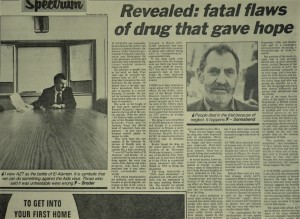
As 1995 ended, Sonnabend got me into a study testing new protease inhibitor drugs. Two months later, my Kaposi sarcoma was gone. My blood counts rebounded. I’d survived long enough to get the drugs that keep me alive today.
* * *
In 2009, OUTFEST, the Los Angeles LGBT film festival, awarded Best Documentary to Daryl Wein’s indie film Sex Positive. The movie was based on my 2003 book, Stayin’ Alive: The Invention of Safe Sex. As a guest of OUTFEST, I invited Angelo, who left Florida for San Diego, to stay in my hotel room. Our conversations veered often to Rich. Recalling the good times were a testament to how grateful we felt for the years we had with him.
“I don’t want to weird you out,” I told Angelo,” but I feel like Rich is here when we talk about him.”
“I feel it too,” Angelo replied, “who cares if it’s just wishful thinking.”
AZT helped to change America. The election of President Reagan undoubtedly hastened the rush to drug deregulation. We can never know precisely the extent to which the rapid approval of AZT hastened this process, but it was a significant milestone along the way. Drugs can now be marketed with less stringent efficacy and safety standards, resulting in disasters such as the approval of VIOXX which according to most estimates caused over 40,000 American deaths. This is how AZT helped to change America.
That lesson is the best way I know how to honor Rich.

